- Page 1 and 2:
- F A O E N A N D V I MO N I T O R
- Page 3 and 4:
FOREWORD Agrometeorology deals with
- Page 5 and 6:
ACKNOWLEDGEMENTS We want to thank D
- Page 7 and 8:
35 35 35 36 36 37 37 37 37 38 38 39
- Page 9 and 10:
174 175 176 176 177 178 179 180 180
- Page 11 and 12:
LIST OF PRINCIPAL SYMBOLS Roman Alp
- Page 13 and 14:
T n °C Observed minimum temperatur
- Page 15 and 16:
CHAPTER 1 INTRODUCTION OVERVIEW Whe
- Page 17 and 18:
INTRODUCTION Freeze and frost defin
- Page 19 and 20:
INTRODUCTION FIGURE 1.2 Mean air an
- Page 21 and 22:
INTRODUCTION FIGURE 1.4 Air (T a )
- Page 23 and 24:
INTRODUCTION TABLE 1.2 Categories a
- Page 25 and 26:
INTRODUCTION example, because bloom
- Page 27 and 28:
INTRODUCTION south in Florida in re
- Page 29 and 30:
INTRODUCTION assistance might be in
- Page 31 and 32:
CHAPTER 2 RECOMMENDED METHODS OF FR
- Page 33 and 34: RECOMMENDED METHODS OF FROST PROTEC
- Page 35 and 36: RECOMMENDED METHODS OF FROST PROTEC
- Page 37 and 38: RECOMMENDED METHODS OF FROST PROTEC
- Page 39 and 40: RECOMMENDED METHODS OF FROST PROTEC
- Page 41 and 42: RECOMMENDED METHODS OF FROST PROTEC
- Page 43 and 44: RECOMMENDED METHODS OF FROST PROTEC
- Page 45 and 46: RECOMMENDED METHODS OF FROST PROTEC
- Page 47 and 48: RECOMMENDED METHODS OF FROST PROTEC
- Page 49 and 50: RECOMMENDED METHODS OF FROST PROTEC
- Page 51 and 52: RECOMMENDED METHODS OF FROST PROTEC
- Page 53: RECOMMENDED METHODS OF FROST PROTEC
- Page 56 and 57: ] F R O S T P R O T E C T I O N : F
- Page 58 and 59: ] F R O S T P R O T E C T I O N : F
- Page 60 and 61: ] F R O S T P R O T E C T I O N : F
- Page 62 and 63: ] F R O S T P R O T E C T I O N : F
- Page 64 and 65: ] F R O S T P R O T E C T I O N : F
- Page 66 and 67: ] F R O S T P R O T E C T I O N : F
- Page 68 and 69: ] F R O S T P R O T E C T I O N : F
- Page 70 and 71: ] F R O S T P R O T E C T I O N : F
- Page 72 and 73: ] F R O S T P R O T E C T I O N : F
- Page 74 and 75: ] F R O S T P R O T E C T I O N : F
- Page 76 and 77: ] F R O S T P R O T E C T I O N : F
- Page 78 and 79: ] F R O S T P R O T E C T I O N : F
- Page 81 and 82: CHAPTER 4 FROST DAMAGE: PHYSIOLOGY
- Page 83: FROST DAMAGE: PHYSIOLOGY AND CRITIC
- Page 87 and 88: FROST DAMAGE: PHYSIOLOGY AND CRITIC
- Page 89 and 90: FROST DAMAGE: PHYSIOLOGY AND CRITIC
- Page 91 and 92: FROST DAMAGE: PHYSIOLOGY AND CRITIC
- Page 93 and 94: FROST DAMAGE: PHYSIOLOGY AND CRITIC
- Page 95 and 96: FROST DAMAGE: PHYSIOLOGY AND CRITIC
- Page 97 and 98: FROST DAMAGE: PHYSIOLOGY AND CRITIC
- Page 99 and 100: FROST DAMAGE: PHYSIOLOGY AND CRITIC
- Page 101 and 102: FROST DAMAGE: PHYSIOLOGY AND CRITIC
- Page 103 and 104: FROST DAMAGE: PHYSIOLOGY AND CRITIC
- Page 105 and 106: CHAPTER 5 FROST FORECASTING AND MON
- Page 107 and 108: FROST FORECASTING AND MONITORING di
- Page 109 and 110: FROST FORECASTING AND MONITORING A
- Page 111 and 112: FROST FORECASTING AND MONITORING Fo
- Page 113 and 114: FROST FORECASTING AND MONITORING FI
- Page 115 and 116: FROST FORECASTING AND MONITORING WE
- Page 117 and 118: FROST FORECASTING AND MONITORING FI
- Page 119 and 120: FROST FORECASTING AND MONITORING De
- Page 121 and 122: FROST FORECASTING AND MONITORING de
- Page 123 and 124: FROST FORECASTING AND MONITORING FI
- Page 125 and 126: FROST FORECASTING AND MONITORING st
- Page 127 and 128: CHAPTER 6 PASSIVE PROTECTION METHOD
- Page 129 and 130: PASSIVE PROTECTION METHODS enhance
- Page 131 and 132: PASSIVE PROTECTION METHODS use an
- Page 133 and 134: PASSIVE PROTECTION METHODS FIGURE 6
- Page 135 and 136:
PASSIVE PROTECTION METHODS After st
- Page 137 and 138:
PASSIVE PROTECTION METHODS of miner
- Page 139 and 140:
PASSIVE PROTECTION METHODS FIGURE 6
- Page 141 and 142:
PASSIVE PROTECTION METHODS CANOPY T
- Page 143 and 144:
PASSIVE PROTECTION METHODS damage h
- Page 145 and 146:
PASSIVE PROTECTION METHODS of culm
- Page 147 and 148:
PASSIVE PROTECTION METHODS AVOIDING
- Page 149 and 150:
PASSIVE PROTECTION METHODS TABLE 6.
- Page 151 and 152:
PASSIVE PROTECTION METHODS Organic
- Page 153 and 154:
PASSIVE PROTECTION METHODS Fucik (1
- Page 155:
PASSIVE PROTECTION METHODS Many com
- Page 158 and 159:
] F R O S T P R O T E C T I O N : F
- Page 160 and 161:
] F R O S T P R O T E C T I O N : F
- Page 162 and 163:
] F R O S T P R O T E C T I O N : F
- Page 164 and 165:
] F R O S T P R O T E C T I O N : F
- Page 166 and 167:
] F R O S T P R O T E C T I O N : F
- Page 168 and 169:
] F R O S T P R O T E C T I O N : F
- Page 170 and 171:
] F R O S T P R O T E C T I O N : F
- Page 172 and 173:
] F R O S T P R O T E C T I O N : F
- Page 174 and 175:
] F R O S T P R O T E C T I O N : F
- Page 176 and 177:
] F R O S T P R O T E C T I O N : F
- Page 178 and 179:
] F R O S T P R O T E C T I O N : F
- Page 180 and 181:
] F R O S T P R O T E C T I O N : F
- Page 182 and 183:
] F R O S T P R O T E C T I O N : F
- Page 184 and 185:
] F R O S T P R O T E C T I O N : F
- Page 186 and 187:
] F R O S T P R O T E C T I O N : F
- Page 188 and 189:
] F R O S T P R O T E C T I O N : F
- Page 190 and 191:
] F R O S T P R O T E C T I O N : F
- Page 192 and 193:
] Once started, the sprinklers shou
- Page 194 and 195:
] F R O S T P R O T E C T I O N : F
- Page 196 and 197:
] F R O S T P R O T E C T I O N : F
- Page 198 and 199:
] F R O S T P R O T E C T I O N : F
- Page 200 and 201:
] F R O S T P R O T E C T I O N : F
- Page 203 and 204:
CHAPTER 8 APPROPRIATE TECHNOLOGIES
- Page 205 and 206:
APPROPRIATE TECHNOLOGIES frost prot
- Page 207 and 208:
APPROPRIATE TECHNOLOGIES fashion. O
- Page 209 and 210:
APPROPRIATE TECHNOLOGIES CROP COUNT
- Page 211 and 212:
APPROPRIATE TECHNOLOGIES CROP COUNT
- Page 213:
APPROPRIATE TECHNOLOGIES other crop
- Page 216 and 217:
] F R O S T P R O T E C T I O N : F
- Page 218 and 219:
] F R O S T P R O T E C T I O N : F
- Page 220 and 221:
] F R O S T P R O T E C T I O N : F
- Page 222 and 223:
] F R O S T P R O T E C T I O N : F
- Page 224 and 225:
] F R O S T P R O T E C T I O N : F
- Page 226 and 227:
] F R O S T P R O T E C T I O N : F
- Page 228 and 229:
] F R O S T P R O T E C T I O N : F
- Page 231:
APPENDIX 2 CONSTANTS Specific heat
- Page 234 and 235:
] F R O S T P R O T E C T I O N : F
- Page 236 and 237:
] F R O S T P R O T E C T I O N : F
- Page 239:
- FAO ENVIRONMENT AND NATURAL RESOU


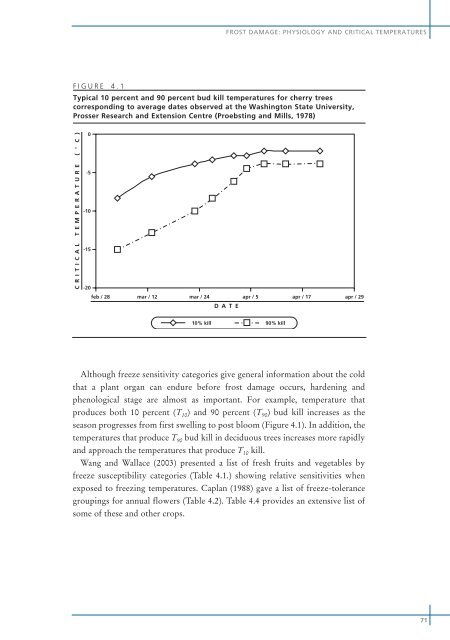
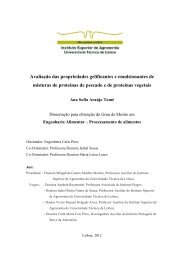
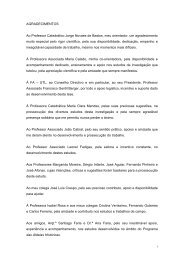
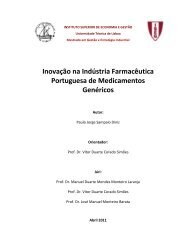
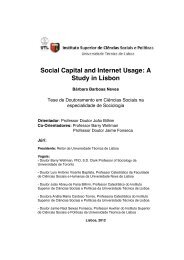
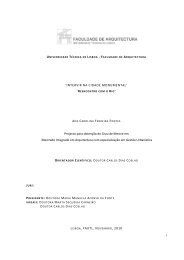
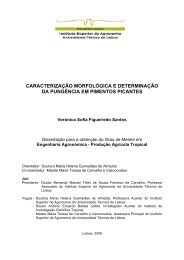

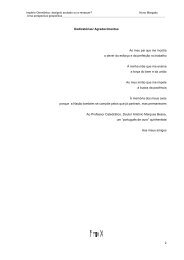

![Tese - Es..[1].pdf - UTL Repository - Universidade Técnica de Lisboa](https://img.yumpu.com/25707135/1/184x260/tese-es1pdf-utl-repository-universidade-taccnica-de-lisboa.jpg?quality=85)


